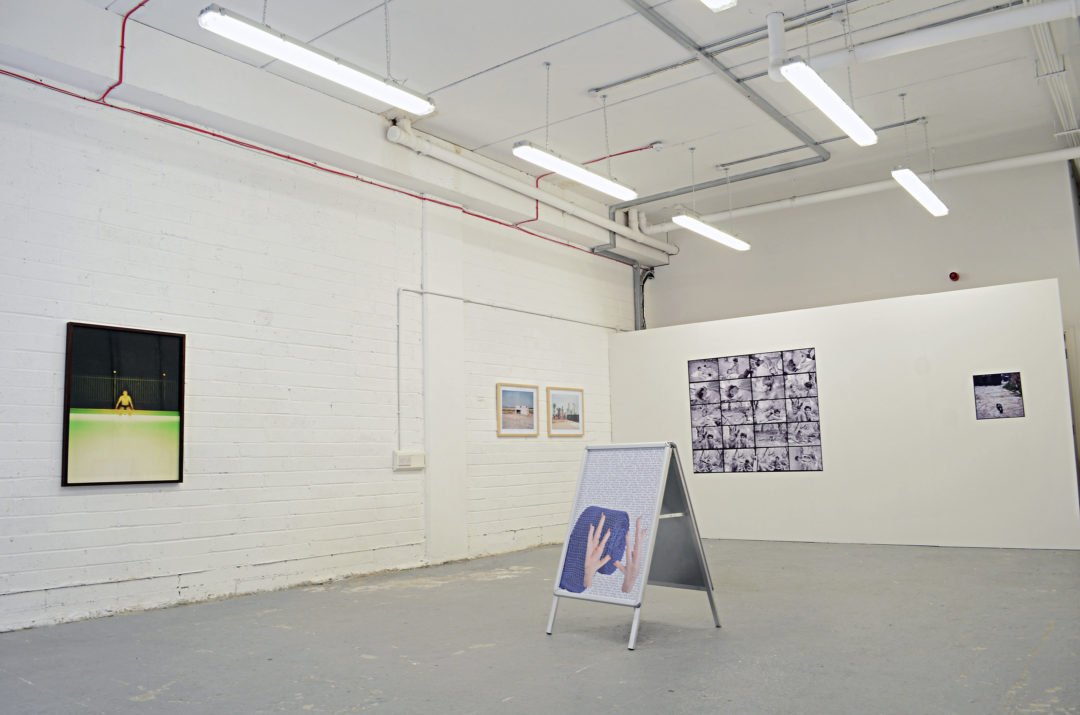
MARTIN HEALY, TOM HUNTER, DRAGANA JURISIC, SHANE LYNAM, CHRISTINE SULLIVAN & ROB FLINT.
COMMISSIONED TEXT BY MATT PACKER.
PREVIEW Friday 27 September, 6-8 PM
28 September – 26 October 2013
OPEN FRIDAYS & SATURDAYS 12 – 6 PM
Fading Lights are Fading takes as its jumping off point artists who are lens-based, and whose work suggests the individual trying to find a sense of identity and place in a greater social and political dynamic. The work is also conscious of the ‘lens’ or of its own making, so also making the viewer consider the process and visual construct, often making art historical references.
FLOOD is also delighted to announce a new series of publications which accompany each project, and features a specially commissioned text for each issue. For Fading Lights are Fading FLOOD is delighted to announce a new text by Matt Packer. This is a 8 page newspaper style publication, building up into a series as each shows progresses. This newspaper-style publication is available for free direct from FLOOD, selected galleries across Ireland and available by post. Please get in touch with the gallery for details.
Martin Healy’s work explores the aesthetics and mediation of popular cultural mythologies and phenomena. Through the mediums of photography and video, Healy’s explorations are examinations of the currency or belief structures that support each of the mythologies he studies. His work has examined various phenomena including an infamous tale of supernatural possession, cryptozoological phenomena (the study of mythological animals whose existence is unproven) and backwards masking (the phenomena of hidden messages in reversed music). In the context of his film and photographic explorations Healy regularly references the perceptual phenomena of ‘pareidolia’; a psychological phenomenon where a vague or random stimulus (often an image or sound) is perceived as recognizable and familiar, suggesting there is more present in the imagery than is immediately apparent.
Tom Hunter was born in Dorset and moved to Hackney in 1986 where he lived in squats for 16 years. He began studying photography when he was twenty-five, and graduated with first-class honours from the London College of Printing (now London College of Communication) in 1994. He received a Master’s degree at the Royal College of Art, London, in 1997. Tom then embarked on a two-year trip across Europe on a double decker bus, in which time he completed a series of portraits depicting his fellow travellers. His most recent work is a series of narratives that draw on scenes from urban east London and headlines from his local newspaper, the Hackney Gazette, using classical paintings for inspiration.
Dragana Jurisic’s work looks at the effects of exile and displacement on memory and identity. Once a person loses his or her original world, they realise how fragile all the other worlds are. Photography contains elements such as fleetingness, which allow it to capture that sense of rootlessness and dislocation with relative ease. Both exile and photography intensify our perception of the world. In both, the memory is in its underlining core. Both are characterised by melancholy. As Salman Rushdie said, the exiles live “more comfortably in images, in ideas, than in places.” Fragments of the Atlantis is a part of a larger body of work, YU: The Lost Country (2013). YU is based on the journey of Rebecca West’s as outlined in her masterpiece Black Lamb and Grey Falcon (1941). At Easter 2011, Jurisic started retracing Westʼs journey and re-interpreting her masterpiece by using photography and text, in attempt to re-live her experience of Yugoslavia and to re-examine the conflicting emotions and memories of the country that was.
Shane Lynam, presents new work form the Fifty High Seasons series, documenting the Mission Racine, a project initiated by President General de Gaulle in 1963. It aimed to turn the Languedoc-Roussillon coastline into a series of resorts centered around leisure and offer an alternative source of income for the region. The original vision behind the project was ahead of its time and included complex and unusual urban planning and avant-garde architecture. Although some of the promise of the original vision has lost its shine and the modern architecture now appears dated, the central values, particularly the idea of offering affordable summer holidays for the average citizen, remain key to how the area is managed.
Christine Sullivan and Rob Flint have collaborated since 2006 on art which uses text, description and the voice to de-familiarise or make ritualistic things which are already well known, and to explore the way visual experience is refracted by the other senses. Recent work has explored film narrative, and the aspirational clamour of publicity and low-budget advertising. In YOU TOO CAN LOSE a clash of words and half-familiar shapes evokes, without delivering, the promise of the image in it’s current ubiquity. A grey aluminium A-board, familiar from global high streets, holds a pair of posters filled with the dislocated spectacle of hyperbolic speech and the serene indifference of objects.
FLOOD is a not for profit exhibition space curated by Paul McAree. Previous projects include Housing a Pig, featuring Neil Carroll, Jonathan Mayhew, Jo McGonigle, Keef Winter, Carla Wright; Turn to Red, an exhibition featuring Maryam Jafri, Stephen Gunning, Jim Ricks, Sean Lynch and Suzanne Treister; Backwards into Paradise featuring Seamus Harahan, Lorraine Neeson, Tom Smith, Nadim Vardag and Michael John Whelan; a commissioned publication by Kevin Atherton, and projects with Theresa Nanigian, Terry Atkinson and Flávia Müller Medeiros.
To be added to the mailing list, please email us at the email address below.
FLOOD, Unit 3, JAMES JOYCE STREET, DUBLIN 1, IRELAND
WWW.FLOODDUBLIN.COM INFO@FLOODDUBLIN.COM Contact Paul McAree +353 (0) 86 793 1617
FLOOD is kindly supported by the Arts Council, and Dublin City Council, Arts Office.
Comments